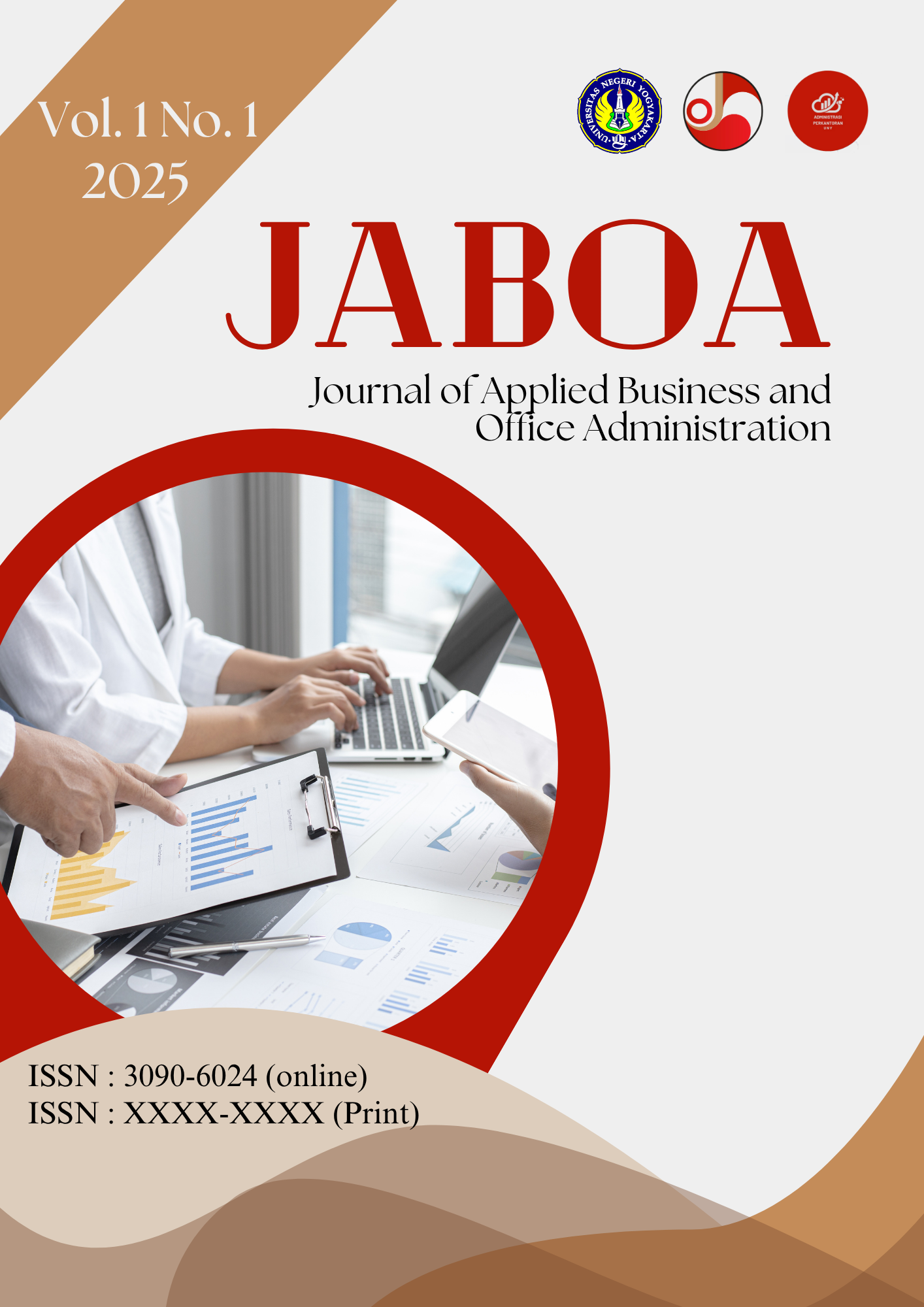The Influence of E-Wom and Perceived Usefulness on Repurchase Intention through the Mediation of E-Trust in Users of Valbury Apps E-Commerce (A Case Study at PT Valbury Asia Futures Semarang)
DOI:
https://doi.org/10.21831/jaboa.v1i1.1358Keywords:
E-trust, E-WOM, perceived usefulness, repurchase intentionAbstract
This study aimed to examine the influences of: (1) e-WOM on repurchase intention, (2) perceived usefulness on repurchase intention, (3) e-WOM on e-trust, (4) perceived usefulness on e-trust, (5) e-WOM on repurchase intention through the mediation of e-trust, and (6) perceived usefulness on repurchase intention through the mediation of e-trust. This quantitative study employed an explanatory research design. The population was PT Valbury Asia Futures Semarang customers, with a sample size of 90 respondents. Data were collected using questionnaires, and the analysis methods used were multiple linear regression, hypothesis testing, and mediation testing. The finding shows that the first E-WOM had a positive and significant influence on repurchase intention. Second, perceived usefulness had a positive and significant influence on repurchase intention. Third, E-WOM had a positive and significant influence on e-trust. Fourth, perceived usefulness had a positive and significant influence on e-trust. Fifth, E-WOM positively and significantly influences intention through partial mediation by e-trust. At last, perceived usefulness positively and has a significant influence on repurchase intention through partial mediation by e-trust.





